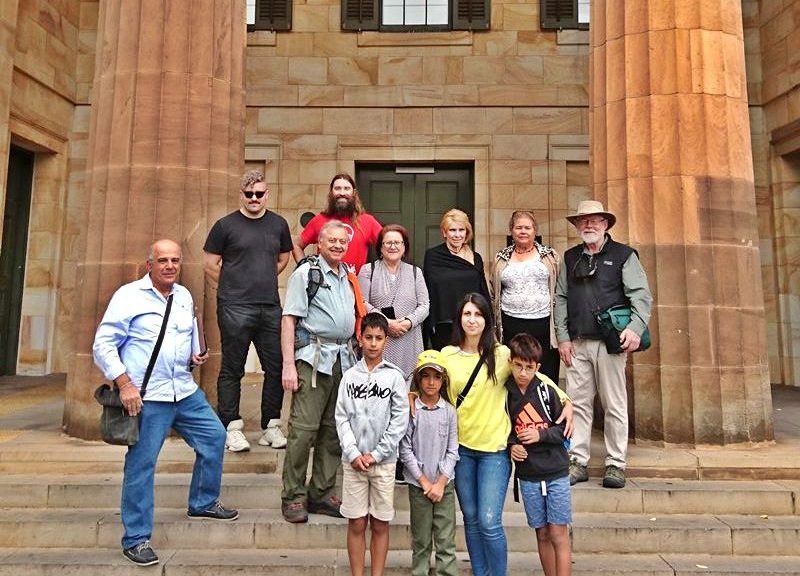An interesting workshop took place in the city of Adelaide last Monday when a group of people from different cultural backgrounds joined the President of the South Australian Friends of the Australian Archaeological Institute at Athens Spiros Sarris, in an archaeological walk along Adelaide’s streets to explore significant architectural features of some of the city’s 19th and early 20th century buildings.
“The main purpose of the Classical Greek Columns Walk was to share significant information about the history of ancient Greek architecture and to explore different rhythms of that era, and delve into world history to highlight the influence exerted by the ancient Greeks on the architecture of Australia. Especially of interest are those buildings that dominate the city centre and have special significance for the state; to see whether they are considered works of art from a historical and architectural point of view,” said Sarris in an interview with Neos Kosmos.
The walk, which started at Victoria Square, included Parliament House, the Adelaide Magistrates Court in Victoria Square, the General Post Office, Electra House, the Town Hall and Edmund Wright House, the old Commonwealth Bank building and many others before it concluded at the Art Gallery of South Australia.
“It’s actually incredibly fascinating when, looking back at different eras, one realises how Greece has influenced the world in so many ways; including design and architecture.
“In my opinion, it all dates back to the 1600s when British historians started displaying an interest in Greek culture and history. The knowledge and ideas the British obtained through their research was then conveyed – consciously or at times even subconsciously – to every place they visited, influencing the rest of Europe and Australia,” says Sarris who feels that over time there were many reasons behind Australia’s decision to include ancient Greek influences in its architecture.
The Classical Greek Columns Walk, which is one of the many events of this year’s Festival Hellenika, was in essence a great opportunity to start a discussion about the importance of Greek architecture, and it benefitted not only those individuals who have a keen eye for art, architecture and an interest in ancient Greece but also the second- and third- generation of Greeks who are interested in learning more about their cultural background and feel they have a need to connect with their heritage and the country of their ancestors.
“At the same time, my aim was to show Australians the level of influence Greece has had on their country so that they understand how much Australia and Greece really have in common in the hope to inspire Australians’ respect towards Greece and the cultural richness it has given to the world,” concluded Sarris.









